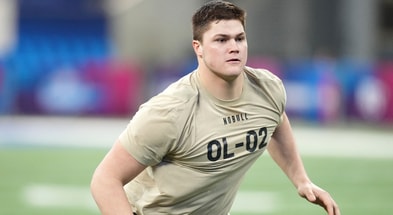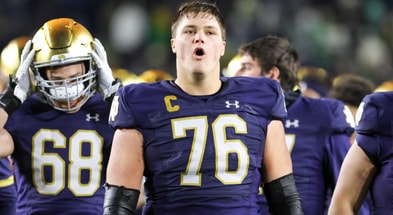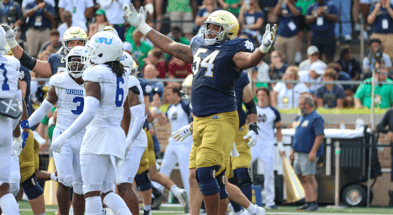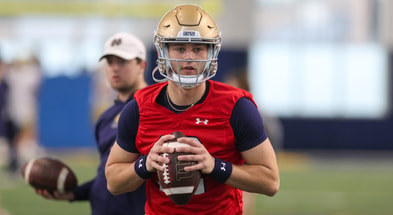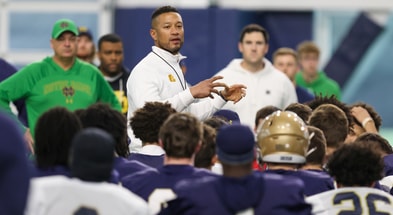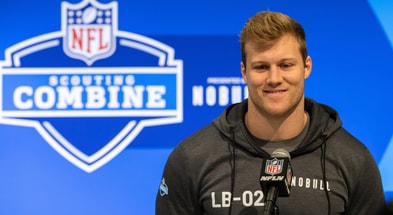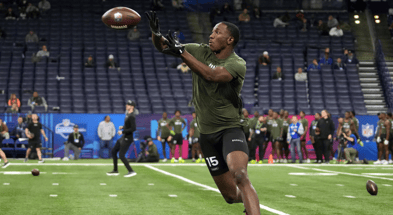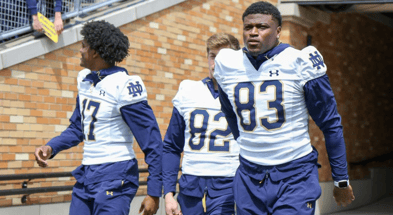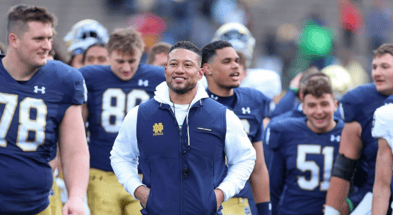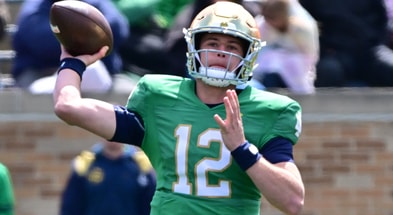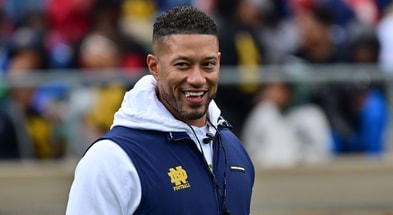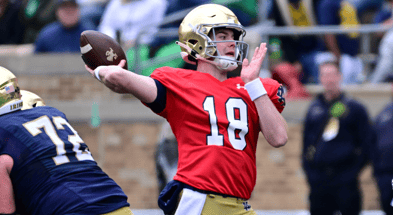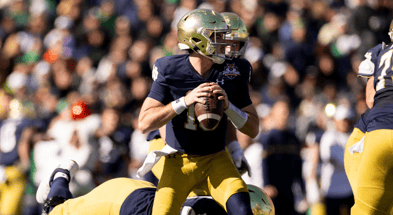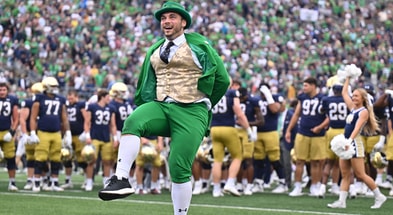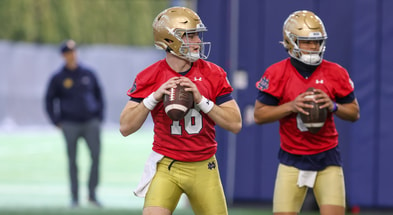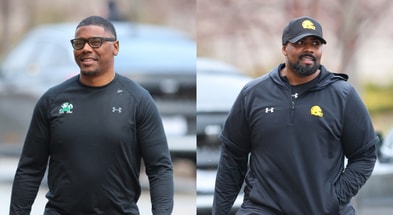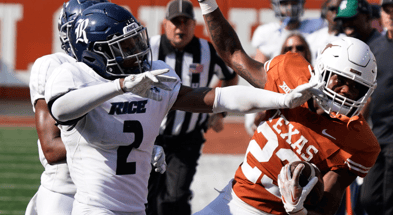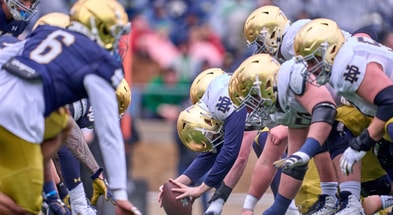Notre Dame, Miami, Iowa, Stanford: Who has been the real ‘Tight End U’ in recent years?
At the end of the day, the “Position U” arguments are relatively meaningless. While they certainly signal which schools are above average at developing certain positions, being top of the list in the category doesn’t necessarily equate to championships. Nevertheless, it’s a fun offseason topic, and Notre Dame fans frequently claim the Irish are “Tight End U.”
In the most recent “Position U” piece from ESPN (August 2021), writer David Hale listed Miami, Iowa and Stanford, in that order, as the top-three tight-end producing programs in the country. As such, they are used as a standard of comparison here.
Hale lists Notre Dame as No. 8 in the rankings, although he did make a note on the Irish in the article:
“Notre Dame ranks eighth on our list, but the Irish are climbing. Cole Kmet was a first-round pick in 2020, and Tommy Tremble went in Round (3) this year. But the best might be yet to come, with Michael Mayer poised for a breakout sophomore season. He’s already got the ‘Baby Gronk’ nickname, and he could soon have Notre Dame pushing for the title of Tight End U.”
Is it fair to keep Notre Dame “climbing,” or should the Irish already be at or near the top? Here’s a look since 2010, which was chosen because it goes back 10 draft-eligible classes; since the classes of 2020, 2021 and 2022 are not able to declare for the draft yet, they are omitted from the calculations.
A few notes: When calculating percentages of tight ends drafted, draft-eligible players who are still on the roster are excluded from the denominator, as they could be drafted in the next few years; all rankings used are On3 Consensus rankings; if a player was drafted at another position, he was excluded from the count.
Miami
Since 2010, the Hurricanes have struggled on the football field. Their draft production reflects the downturn. Miami has signed six four or five-star prospects — three each — since 2010 at tight end. One is still with the team (Will Mallory), leaving five players for this look at the program. Just one, former five star and 2018 signee Brevin Jordan, was drafted (20 percent).
When lower-ranked tight ends are factored into the equation, Miami’s success rate increases slightly. The Hurricanes have signed 18 tight ends since 2010, and four were ultimately drafted (22.2 percent).
PROMOTION: Sign up for just $1 for your first year at Blue & Gold
Iowa
Iowa has not signed a five-star tight end in the last 10 draft-eligible classes, but head coach Kirk Ferentz has notched five four-star prospects at the position. Excluding Logan Lee, a 2019 signee still on the team who now plays defensive end, two of the four stars heard their names called at the NFL Draft, which is 50 percent.
In total, Iowa signed 16 tight ends between 2010-19, and four were drafted. That’s an overall success rate of 25 percent. You’ve probably heard of three of those four players: George Kittle (2017), Noah Fant (2016) and TJ Hockenson (2016). Both Kittle and Hockensen were three-star recruits.
Stanford
In total since 2010, the Cardinal have signed six four-star tight ends and two five-star tight ends, although one four-star remains on the team. Four have been drafted, a success rate of 57.1 percent.
The Cardinal have had less success with three-star players at the position, however. When they are factored into the equation, Stanford has sent just 23.5 percent of its players on to the NFL Draft; they’ve signed 17, and only the four aforementioned four or five stars were taken in the draft.
Austin Hooper and Dalton Schultz are the most noticeable names on the list. Hooper was drafted in the third round of the 2016 NFL Draft by the Atlanta Falcons and is currently a member of the Cleveland Browns organization. Schultz was drafted in the fourth round in 2018 by the Dallas Cowboys and remains with the franchise.
Notre Dame
Notre Dame signed 11 four-star prospects at the tight end position between 2010-19, and five were drafted: Ben Koyack, Troy Niklas, Durham Smythe, Alize Mack and Cole Kmet. That is more than each of the three aforementioned schools.
If you exclude George Takacs, a current graduate student at Boston College, that is half. In other words, if you were a four or five-star recruit at Notre Dame, you had a 50 percent chance of ultimately being drafted into the NFL.
The Irish take the lead among these programs when looking at raw numbers on the whole. The team signed a total of 15 tight ends during the period in question, and six were drafted, a success rate of 40 percent.
So … who is ’Tight End U’?
Admittedly, this article does not measure success upon arriving on the NFL scene. If it did, it would be hard to argue with what Iowa has produced over the last decade.
It merely examines the prospects up until they hear their names called at the draft. When it comes to taking high-level talent (which I’ve defined here as four and five-star prospects) and sending players to the NFL in recent years, Stanford takes the cake with a 57.1 percent success rate. Notre Dame is tied for second with Iowa, sending half of their respective four and five-star groups to the draft (50 percent).
However, Notre Dame’s six tight ends sent to the NFL since the 2010 class takes the outright title — the other three programs listed have sent four tight ends each to the league — and its success rate of 40 percent with all tight end prospects tops Miami (22.2 percent), Iowa (25 percent) and Stanford (23.5 percent).
Does the raw number make Notre Dame Tight End U? It might. It also might not. If nothing else, it signals at this point in time, South Bend isn’t a bad place to be a tight end.

